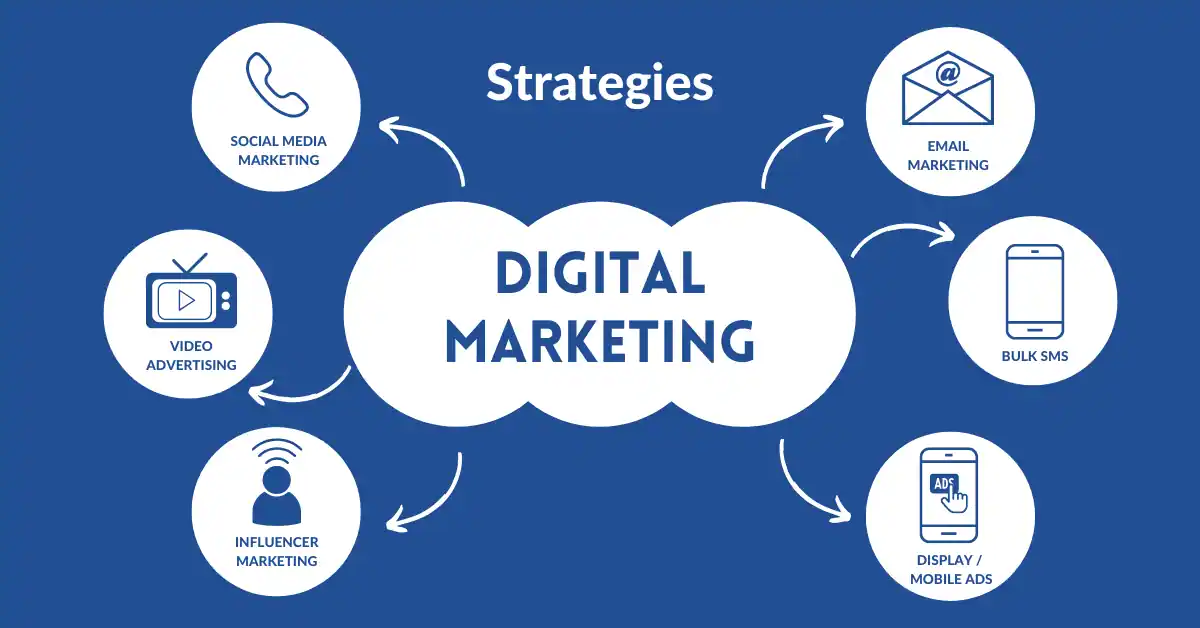Digital marketing has revolutionized how businesses interact with their audience. But what makes it truly effective? One key strategy is tracking users across the web. So, what exactly is the digital marketing strategy that helps marketers follow users’ online behavior, and why is it essential?
Table of Contents
ToggleWhat is a Digital Marketing Strategy?
A digital marketing strategy is a set of planned actions to promote products or services online. It involves using various tools and tactics to engage the target audience. A crucial part of this strategy is tracking user behavior, which helps marketers understand user preferences and improve their campaigns.
Importance of Tracking Users Across the Web
Imagine a shop owner who knows exactly what each customer likes. That’s what tracking does for digital marketers. It allows them to see what content users are interested in, what they click on, and how they navigate through websites. This data helps businesses provide a more personalized experience, leading to better engagement and sales.
Understanding Web Tracking
What is Web Tracking?
Web tracking is the process of collecting data about users as they browse the internet. This can include information about which websites they visit, how long they stay, and what actions they take on a page. It’s like a digital breadcrumb trail that tells a story about user behavior.
How Does Web Tracking Work?
Web tracking often uses small files called cookies that are stored on a user’s browser. These cookies collect data about user behavior, which can then be analyzed to create personalized marketing campaigns. Other methods include pixel tags, device fingerprinting, and tracking IP addresses.
Why Do Marketers Track Users Across the Web?
Improving Ad Targeting
One of the primary reasons for tracking users is to improve ad targeting. When marketers know what a user is interested in, they can show ads that are more relevant. This not only increases the chances of conversion but also enhances the user’s experience.
Enhancing User Experience
Tracking helps businesses understand their audience better, allowing them to provide a tailored user experience. For instance, if a user frequently visits a website’s tech blog, the site may suggest articles on the latest gadgets, making the content more engaging.
Data-Driven Marketing Decisions
Data is the backbone of any successful digital marketing strategy. By tracking users, marketers can analyze patterns, measure the effectiveness of campaigns, and make informed decisions about where to invest their marketing budget.
Popular Digital Marketing Strategies for Tracking Users
Cookies and Pixel Tracking
Cookies are the most common method of tracking users across the web. They store data about user preferences, login information, and browsing behavior. Pixel tracking, on the other hand, uses tiny images embedded in a website or email to collect data on user activity.
IP Address Tracking
IP addresses can provide insights into a user’s location and internet service provider. This helps businesses understand where their audience is coming from and tailor content or ads accordingly.
Behavioral Tracking
Behavioral tracking looks at the actions users take online, such as the pages they visit, the products they view, or the items they add to their cart. This helps in creating highly targeted marketing campaigns.
Device Fingerprinting
Unlike cookies, device fingerprinting does not rely on storing data on the user’s device. Instead, it collects information about the user’s device, such as the operating system, browser type, and installed plugins, to identify the user even if they switch devices.
The Role of Data Privacy in Web Tracking
GDPR and CCPA Regulations
With the rise of web tracking, data privacy has become a significant concern. Regulations like GDPR in Europe and CCPA in California have set guidelines on how businesses can collect, store, and use user data. Companies must comply with these laws to avoid hefty fines.
How Data Privacy Affects Tracking Strategies
Data privacy regulations have led to stricter guidelines on web tracking. Businesses must now be transparent about what data they collect and why, ensuring they have the user’s consent.
How to Implement Effective Web Tracking in Your Digital Marketing Strategy
Using Google Analytics
Google Analytics is a powerful tool that helps marketers track website traffic, user behavior, and more. It can be integrated easily and provides detailed insights into how users interact with a website.
Utilizing Facebook Pixel
Facebook Pixel helps businesses track the effectiveness of their ads on Facebook. It provides data on actions users take after seeing an ad, allowing marketers to optimize future campaigns.
Benefits of Cross-Device Tracking
Cross-device tracking ensures marketers can follow users across multiple devices, providing a seamless experience. For example, if a user starts shopping on their phone but completes the purchase on their laptop, marketers can track this behavior and attribute it correctly.
Conclusion
Tracking users across the web has become a fundamental part of digital marketing strategies. By understanding user behavior, businesses can create more personalized experiences, improve ad targeting, and make data-driven decisions.
However, it is essential to balance effective tracking with respecting users’ privacy, especially in light of regulations like GDPR and CCPA. By using tools like cookies, pixel tracking, and cross-device tracking, marketers can gain valuable insights, but transparency and compliance are key to maintaining user trust.
FAQs
Q: What is the main purpose of tracking users across the web?
The main purpose is to gather data on user behavior to improve ad targeting, personalize content, and make informed marketing decisions.
Q: How do cookies help in tracking users?
Cookies store small pieces of information about user preferences and behavior, allowing websites to recognize returning users and personalize their experience.
Q: What is device fingerprinting, and how is it different from cookies?
Device fingerprinting collects information about a device (like its browser type and OS) to identify users without storing data on their device, unlike cookies.
Q: Are there any legal issues with tracking users online?
Yes, data privacy regulations like GDPR and CCPA require businesses to obtain user consent and be transparent about the data they collect, how it is used, and stored.
Q: How can businesses ensure compliance with data privacy laws while tracking users?
Businesses should provide clear privacy policies, obtain explicit consent from users, and use tools that respect privacy regulations, ensuring transparency and user control over data sharing.






